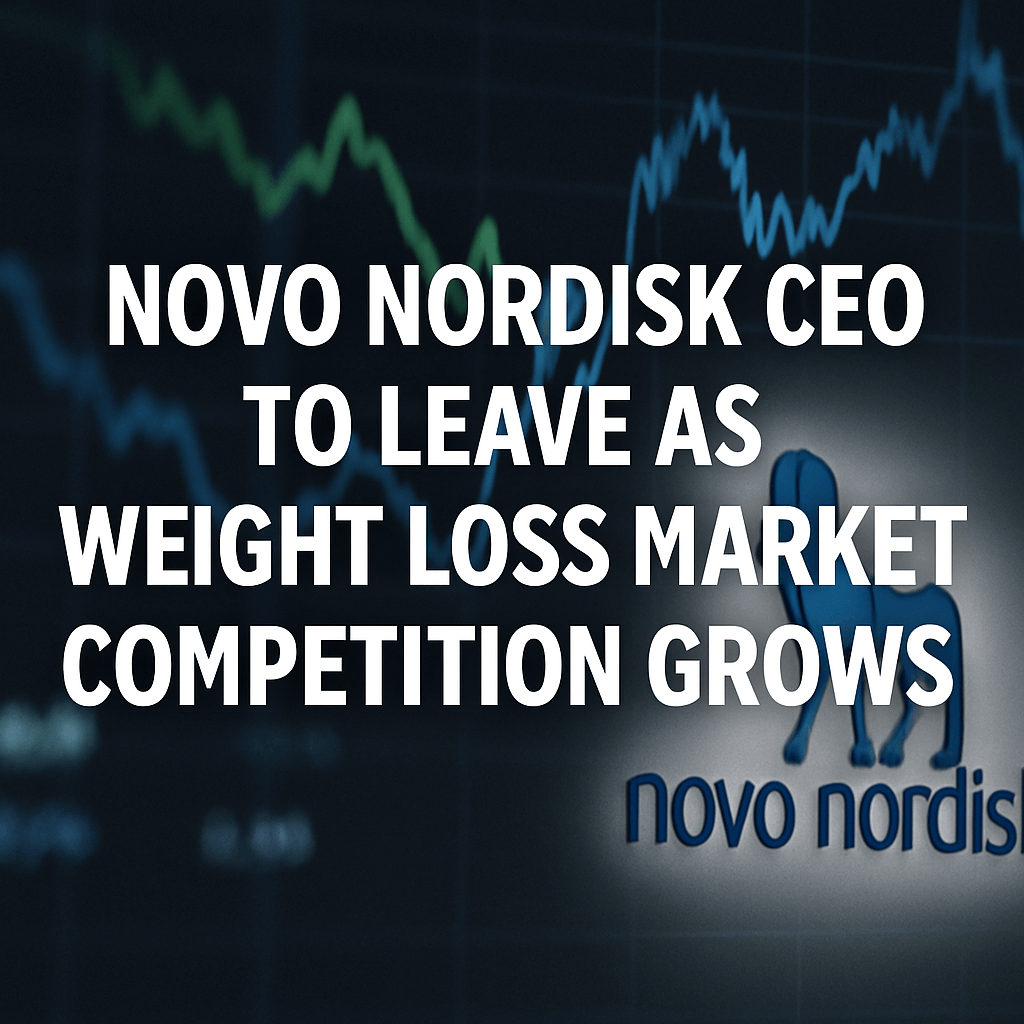Novo Nordisk CEO to Leave as Weight-Loss Market Competition Grows

Executive Transition Driven by Market Pressures and Share Performance
Danish pharmaceutical leader Novo Nordisk today announced that Chief Executive Officer Lars Fruergaard Jørgensen will step down after eight years at the helm. The decision comes as the company contends with a sharp pullback in its share price, increasing competitive pressure in the weight-loss therapeutic segment, and a revised financial outlook for 2025.
Financial Outlook and Guidance Revisions
In late April, Novo Nordisk cut its full-year guidance for 2025:
- Sales growth (at constant exchange rates): 13–21% (previously 16–24%)
- Operating profit growth: 16–24% (previously 19–27%)
These adjustments followed a 27% slump in March—Novo Nordisk’s worst monthly performance in over two decades—and a 5% drop in US pre-market trading following the CEO announcement. Analysts at Morgan Stanley calculate that margin compression from higher marketing spend and moderated pricing power on Wegovy and Ozempic could further weigh on profitability.
Competitive Dynamics in Weight-Loss Therapeutics
Emergence of Once-Daily Oral Agents
American rival Eli Lilly has stirred the market with promising Phase II results for its once-daily oral GLP-1 receptor agonist. Early data suggest up to 15% body-weight reduction after 16 weeks—comparable to injectable profiles—potentially reshaping patient preference and reducing needle-aversion barriers.
Impact of Tirzepatide and Next-Gen Molecules
Tirzepatide, the dual GIP/GLP-1 agonist marketed as Mounjaro, recorded 45% year-on-year sales growth last quarter. Evaluate Pharma projects combined market share of GLP-1 analogues to exceed 50% by 2027, raising the stakes for Novo Nordisk’s pipeline.
“With multiple late-stage candidates from small biotechs and Big Pharma, the weight-loss space is becoming a true battleground. Maintaining first-mover advantage will require sustained R&D investment and differentiated delivery formats,” said Dr. Elena Petrova, Senior Analyst at Evaluate Pharma.
R&D Pipeline and Innovation Focus
Under Jørgensen’s tenure, Novo Nordisk advanced several mid- and late-stage candidates beyond GLP-1:
- Oral semaglutide next-generation analogues with improved bioavailability.
- Dual agonists targeting GLP-1/glucagon and GLP-1/GIP for enhanced efficacy.
- Non-peptide small-molecule agonists in preclinical development.
The board expects the new CEO to accelerate proof-of-concept trials in metabolic and cardiovascular indications, while managing pricing negotiations in key markets.
Strategic and Operational Challenges Ahead
Key issues facing the incoming leader include strengthening manufacturing capacity for global supply, navigating evolving pricing frameworks in the US and Europe, and countering biosimilar encroachment post-patent expiry in 2030. Increased investment in digital health platforms and telemedicine partnerships will also be critical to sustain patient adherence and capture real-world data.
Key Priorities for Successor
- Stabilize share performance through clear mid-term targets for margin expansion.
- Maintain leadership in obesity therapeutics via differentiated delivery systems.
- Enhance collaboration with payers to secure favorable reimbursement.
- Drive innovation pipeline while optimizing R&D spend efficiency.
Jørgensen will remain in place until a successor is appointed, ensuring an orderly handover. The search is being led by the board and the Novo Nordisk Foundation, which holds controlling shares. Jørgensen originally joined Novo Nordisk in 1991 and was named CEO in 2017.